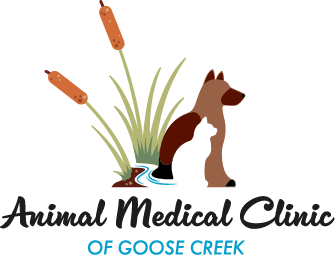Acne in Dogs (Canine Acne)
What is canine acne?
 Canine acne is an inflammatory disorder of the lips and the skin of the muzzle. Dogs with mild cases of acne often have red bumps or pustules (pimples) on their skin, which can, in more severe cases, lead to generalized swelling of the lips and muzzle, bleeding wounds, or scabs on the face. Left untreated, severe cases of canine acne can result in permanent scarring.
Canine acne is an inflammatory disorder of the lips and the skin of the muzzle. Dogs with mild cases of acne often have red bumps or pustules (pimples) on their skin, which can, in more severe cases, lead to generalized swelling of the lips and muzzle, bleeding wounds, or scabs on the face. Left untreated, severe cases of canine acne can result in permanent scarring.
Why do dogs develop acne?
The underlying cause of canine acne is not fully understood. Genetic predisposition is thought to play an important role. Commonly affected breeds include boxers, English bulldogs, French bulldogs, Great Danes, German shorthaired pointers, weimaraners, mastiffs, rottweilers, Labrador retrievers, and Doberman pinschers. Other breeds can be affected, but at lower rates than these predisposed breeds.
Many cases of canine acne are thought to be triggered by trauma to the skin of the chin or muzzle. This trauma can cause hairs to break off near the skin’s surface, leading to inflammation in the hair follicle and eventual rupture. When the hair follicle ruptures, its contents are released into the surrounding skin, which creates further inflammation, since the contents of the hair follicles are recognized as foreign by the surrounding tissues. Although the inflammation associated with canine acne is often sterile (non-infected) in the early stages, bacteria can easily colonize this damaged skin and lead to infection.
In some cases, acne may be associated with underlying skin conditions. Your veterinarian will assess your dog for possible food allergies or environmental allergies. If allergies are suspected, managing the allergies may decrease acne. Additionally, your veterinarian will perform a physical exam and/or laboratory tests to rule out parasites (e.g., Demodex mites) as a factor contributing to the acne.
How is canine acne diagnosed?
In most cases, your veterinarian can diagnose acne based on clinical appearance. The characteristic skin lesions, distributed around the lips and muzzle, are typical of this condition. In some cases, however, further diagnostics may be required to confirm the diagnosis. Your veterinarian may recommend a biopsy of the skin to confirm the diagnosis of acne and to rule out other skin disorders.
Additionally, if there is infection, your veterinarian may recommend bacterial (or fungal) culture and sensitivity tests, which can help identify the organism responsible and the appropriate medications for treatment. Cytology (looking at the cells present in the discharge from the lesions) may also be done to look for infectious organisms or unusual cell types.
How is canine acne treated?
The most common treatment for canine acne is topical benzoyl peroxide. This product helps to flush out the hair follicle and reduce bacterial contamination. In mild cases, benzoyl peroxide alone may be sufficient to resolve canine acne; in more severe cases, long-term benzoyl peroxide may be used to decrease the likelihood of recurrence.
Some patients may also respond to a topical antibiotic, such as mupirocin (Muricin®), which decreases bacterial counts on the surface of the skin. If the lesions are infected, your veterinarian may prescribe an antibiotic for the skin. If oral antibiotics are used, they are typically given for a total of four to eight weeks, depending on the severity of the infection. Topical steroids may also be prescribed to reduce further inflammation. It is important to give all medications as prescribed by your veterinarian.
What can I do at home to help decrease my dog's acne?
One of the most beneficial things you can do at home is resist the temptation to "pop” the pimples. Squeezing the lesions on your dog's face will increase the likelihood of hair follicles rupturing under the skin, leading to worsening inflammation. If you can identify a cause of trauma to your dog's muzzle or chin, preventing this trauma can decrease acne. Possible causes of trauma include using the muzzle to root around in the dirt, eating from a plastic bowl that may have rough edges, or scratching at the face.
© Copyright 2025 LifeLearn Inc. Used and/or modified with permission under license. This content written by LifeLearn Animal Health (LifeLearn Inc.) is licensed to this practice for the personal use of our clients. Any copying, printing or further distribution is prohibited without the express written consent of LifeLearn. This content does not contain all available information for any referenced medications and has not been reviewed by the FDA Center for Veterinary Medicine, or Health Canada Veterinary Drugs Directorate. This content may help answer commonly asked questions, but is not a substitute for medical advice, or a proper consultation and/or clinical examination of your pet by a veterinarian. Please contact your veterinarian if you have any questions or concerns about your pet’s health. Last updated on Jun 18, 2025.


